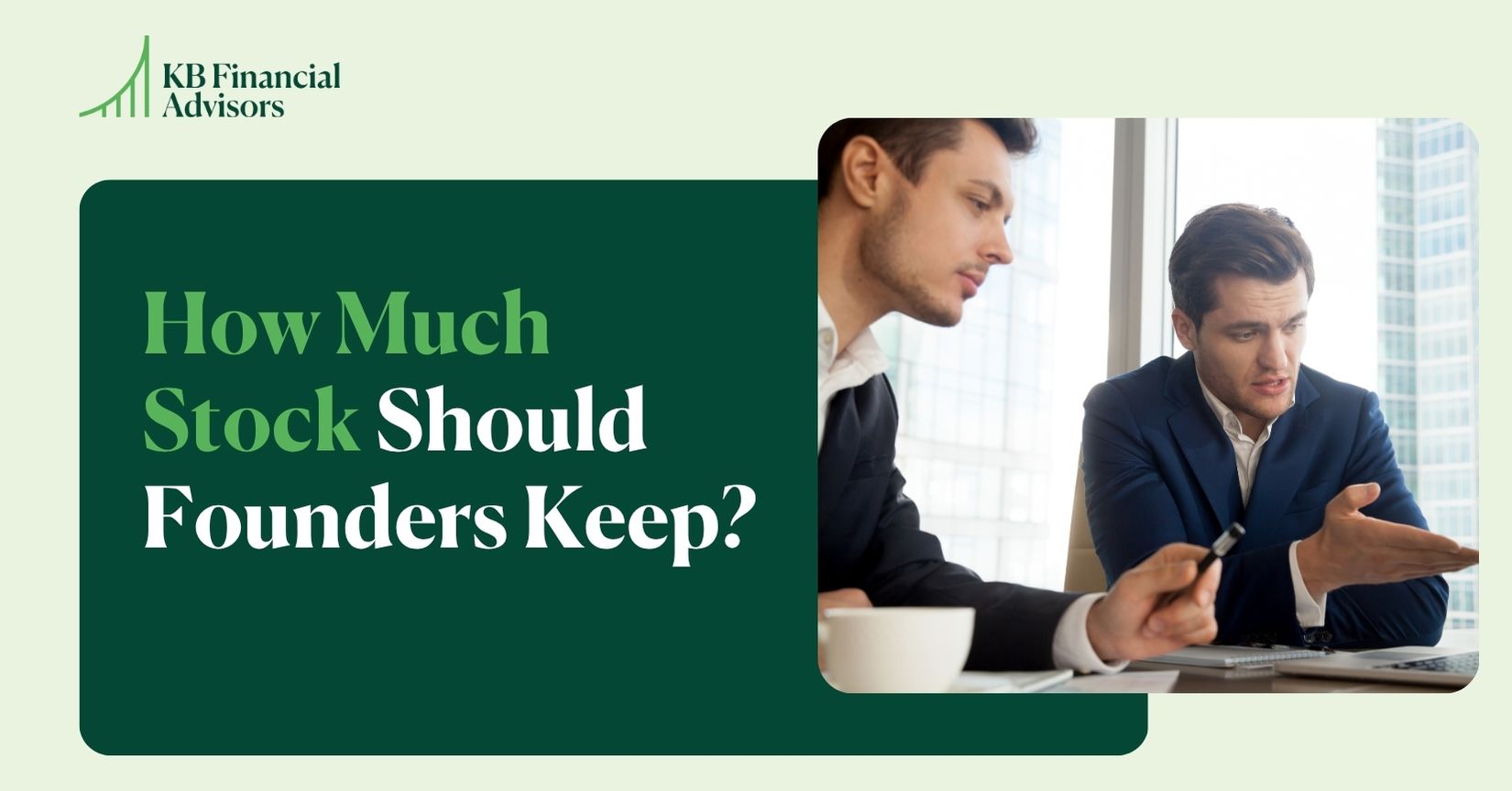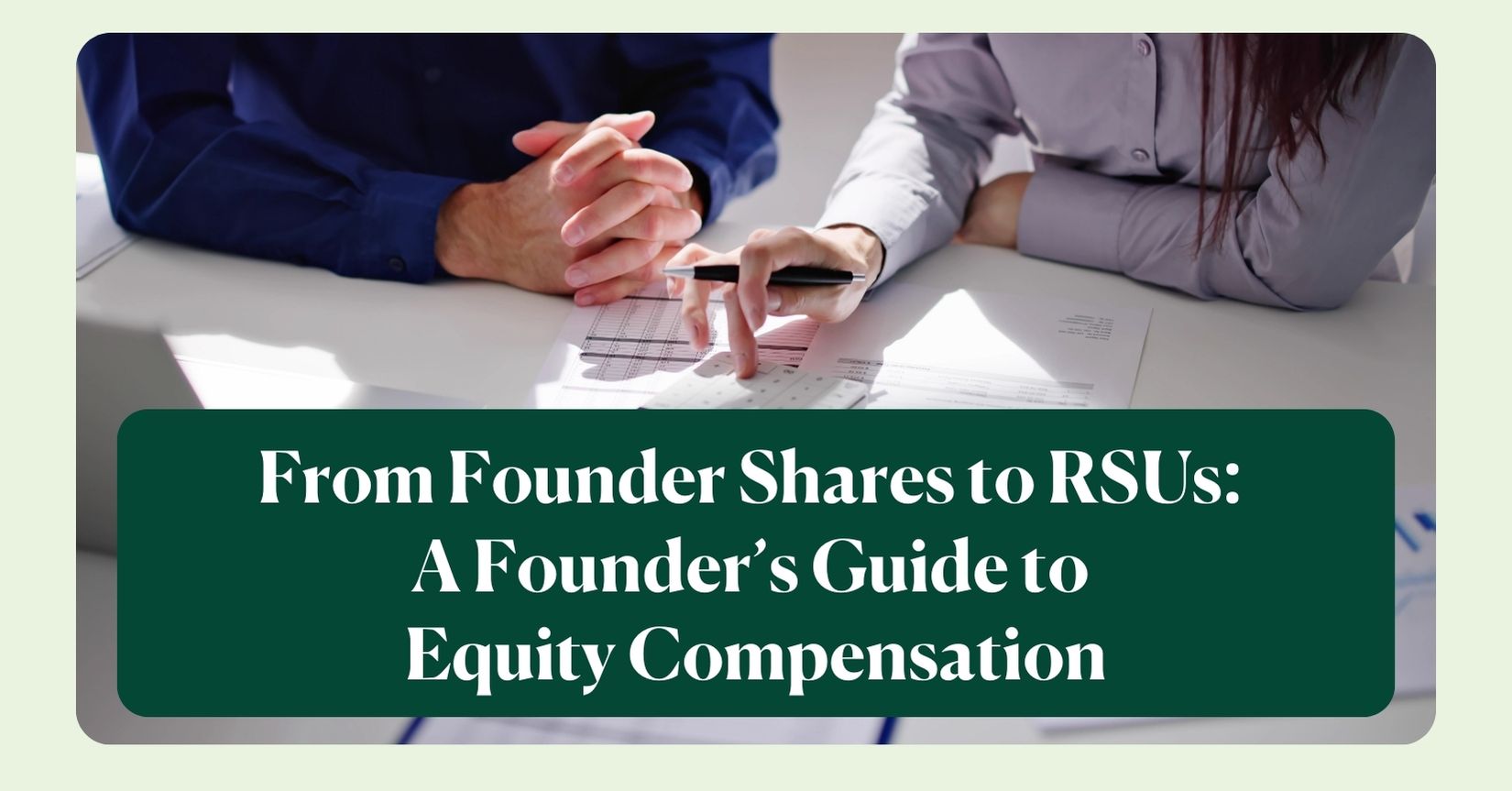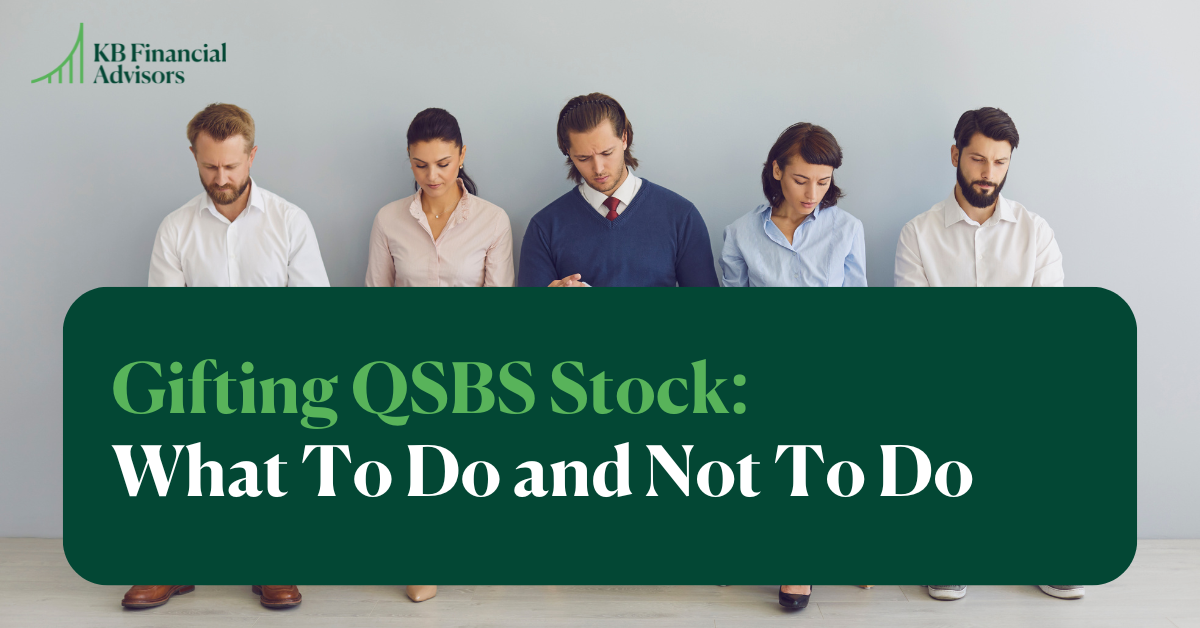You look at your net worth and realize most of it is in your company stock. On one hand, that feels great. You built something real. On the other hand, it is a little scary.
What if the market collapses and takes your stock with it?
Or what if life throws a curveball and you need cash for your family, another house, or college tuition?
This is the reality for most founders. Company stock is exciting, but it is also a big risk if it dominates your financial life. The good news is there’s a practical way to handle it. You can keep some upside while protecting yourself.
In this post, we’ll walk through how to figure out how much stock should founders keep, when to sell, and what to do with the cash.
General Guideline: Reduce Your Concentration by 5-20%
Founders often start with a huge share of their wealth tied to the business. A good rule of thumb is to reduce concentration by 5 – 20% over time. This moves the needle materially without selling so much that you walk away from upside. It is a practical middle ground you may be able to execute prior to a final liquidity event like an IPO.
It’s also important to remember that this is a multi-year plan that plays out over the course of different life stages, so personal factors matter. Your family obligations, other sources of income, how long you can wait for liquidity, taxes, and your risk tolerance all change what “right” looks like for you.
Early stage founders often hold a majority of equity because liquidity is limited. In that situation, the goal is to preserve the runway while creating optionality down the road.

Later stage founders, after a few tender offers or funding rounds, can often make meaningful reductions that move real dollars into diversified assets, while still keeping significant upside.
Here’s What It Looks Like For A Later-Stage Founder
Let’s bring this to life with an example of a later stage founder, who has already experienced a couple of tender offers. The next liquidity event is likely to be the IPO, but the timing is still very uncertain and highly dependent on market conditions.
Let’s say this founder has:
- Company stock value: $35 million
- Founder’s Diversified portfolio: $5 million
- Portfolio + Company Stock: $40 million
Concentration = 35 million ÷ 40 million = 87.5%
If this founder were to reduce concentration to 80%, that would mean selling $3 million worth of company stock.
- Company stock value: $32 million
- Founder’s diversified portfolio becomes: $5 million + $3million = $8 million
- Portfolio + Company Stock remains at $40 million
New concentration = 32 million ÷ 40 million = 80%
Now this reduction would make sense as it liquidates a big enough dollar amount ($3 million) while making a meaningful dent in concentration (- 7.5%). Plus, it still leaves him firmly positioned to benefit from big upside when the IPO goes through.
Reasons Why Founders Sell Their Stock
There are many reasons why founders take money off the table. Maybe an opportunity arises to buy a home instead of renting, or perhaps buying a vacation home. Covering private school fees or college costs is another reason.
Founders may also sell company stock to create a low maintenance portfolio that replaces their salary. This helps remove income pressure so you can sleep better at night knowing you have a financial buffer for day to day cash needs.
For many later-stage founders, a concentration of 75% is a reasonable lower limit prior to an IPO. If a founder has significant near-term goals, such as paying for college or buying a home, we might push lower. But we don’t recommend going below 50% concentration prior to an IPO.
Step By Step Approach For Founders
Here’s a high level outline of how we approach financial planning with founders.
Step 1. Measure Concentration
Calculate your concentration based on your diversified portfolio and the market value of company stock. Be honest. Use round numbers if you need to. Document the math.
Step 2. Pick A Reduction Target Based On Your Personal Goals
Work out how much you will reduce concentration by and when. We find that this works best when it’s tied to personal milestones like buying a home or just simply building a portfolio that replaces your salary.
Step 3. Cover Taxes And Reinvest
Confirm tax withholding and set aside any extra. Reinvest the net proceeds into diversified, low-cost investments, so the sale actually reduces concentration. Leaving the cash on the sidelines or keeping it in one stock undoes the benefit of selling.
Over time, this disciplined cycle of measure, sell, pay taxes, reinvest, turns concentrated risk into steady growth.
Step 4. Revisit and Adapt
This is rarely a set it and forget it exercise. Life changes, markets change, and company timelines change. It’s important to re-evaluate annually or after major life events.
Tips To Make Diversification More Tax-Friendly
There are founder-specific strategies to preserve upside and lower taxes that you may want to discuss with your advisor:
- Qualified Small Business Stock (QSBS): If you qualify, you might be able to exclude up to $10 million or 10 times your basis (whichever is more) from capital gains when you sell your shares. You have to hold your stocks for 5 years or more.
- If QSBS is relevant, there are ways to stack it by gifting shares into trusts for children or other family members early, such that each person gets their own $10 million exclusion.
- Tax aware diversification: Use tax loss harvesting, direct indexing, or staged sales to reduce the tax drag of converting concentrated stock into a diversified portfolio.
These are advanced moves and they matter more the earlier you plan. QSBS planning in particular benefits from acting while the company value is low.
Finding the Right Approach For You
Founder stock is a mix of upside and risk. There is no one right answer for every founder. The practical path is to decide what you want to accomplish, reduce concentration in stages, and keep the upside you value. For many later-stage founders a modest reduction of 5 to 20% of concentration makes a meaningful difference in financial safety while leaving plenty of upside if the company wins.
At KB Financial Advisors, we help founders figure out exactly how much to keep, build tax strategies, and create reinvestment plans that fit your life and financial goals.
If you want a clear, practical plan for your founder stock, we can help you get there.
Reach out and book a meeting today.




